Chipmunks are familiar creatures across the United States. You might have one living in your backyard or see them regularly scurrying across a hiking trail. Chipmunks are cute. Still, chances are, you see them enough that you don’t pay them much attention.
But did you know there are 25 species of chipmunks, with 22 of them found in the United States? Seeing the 22 United States species might be one of the most fun and overlooked nature quests.
Doubt it? Well, the best way to see those chipmunks is to visit the varied national parks of the western United States. To see them all, you would need to visit the high mountain grandeur of Glacier National Park (red-tailed chipmunk), the stunning canyons of Utah (Hopi chipmunk and others), the rainforests of Olympic (Towsend’s chipmunk) and the postcard-perfect valleys and mountains of Yosemite (eight species!). And more.
Initially, identifying chipmunk species can be tricky (I’ll provide some pointers in a bit). But in the western United States, chipmunks have evolved to thrive in widely varied habitats. That has resulted in differing striped patterns, colorations and sizes. Chipmunks can be strikingly different. That is only apparent if you take time to actually see the chipmunk.
Chipmunks have much to recommend them for wildlife watching. They’re active during the day. Many species can be observed at close distances. Some of the best spots for finding them are around hiking trails and campsites. You can easily add chipmunks to your iNaturalist sightings or mammal life list by touring national parks and being alert.
Want to enjoy and spot these cute and overlooked mammals? This guide will get you started.
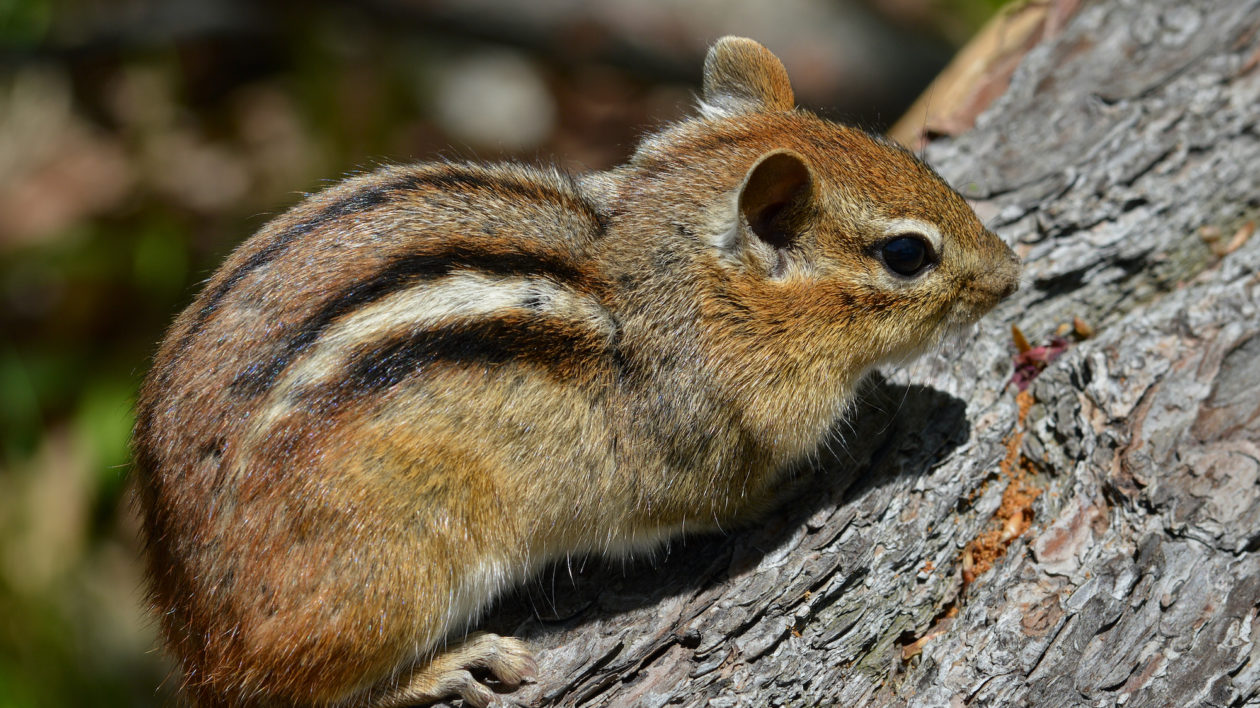
The Chipmunk Basics
Chipmunks are striped members of the squirrel family. One species, the Siberian chipmunk, lives in Asia. In the eastern two-thirds of the United States, there is also only one species, the Eastern chipmunk (see above).
In western North America, where the remaining 23 species are found, chipmunks evolved and diversified. Two of those species are endemic to Mexico. That leaves 21 species found in the Rockies, the arid regions, the Sierras and the Pacific Coast.
Chipmunks typically undergo periods of hibernation or torpor, but they do have to gather food frequently. (This does vary by habitat).
Chipmunks play often unappreciated roles in forest ecosystems. They are key dispersers of seeds, probably not surprising to anyone who has seen a chipmunk with bulging cheek pouches. According to the journal Ecology, chipmunks also “disperse fungal spores at a time when many seeds are germinating, which is key for the survival and growth of tree seedlings.”
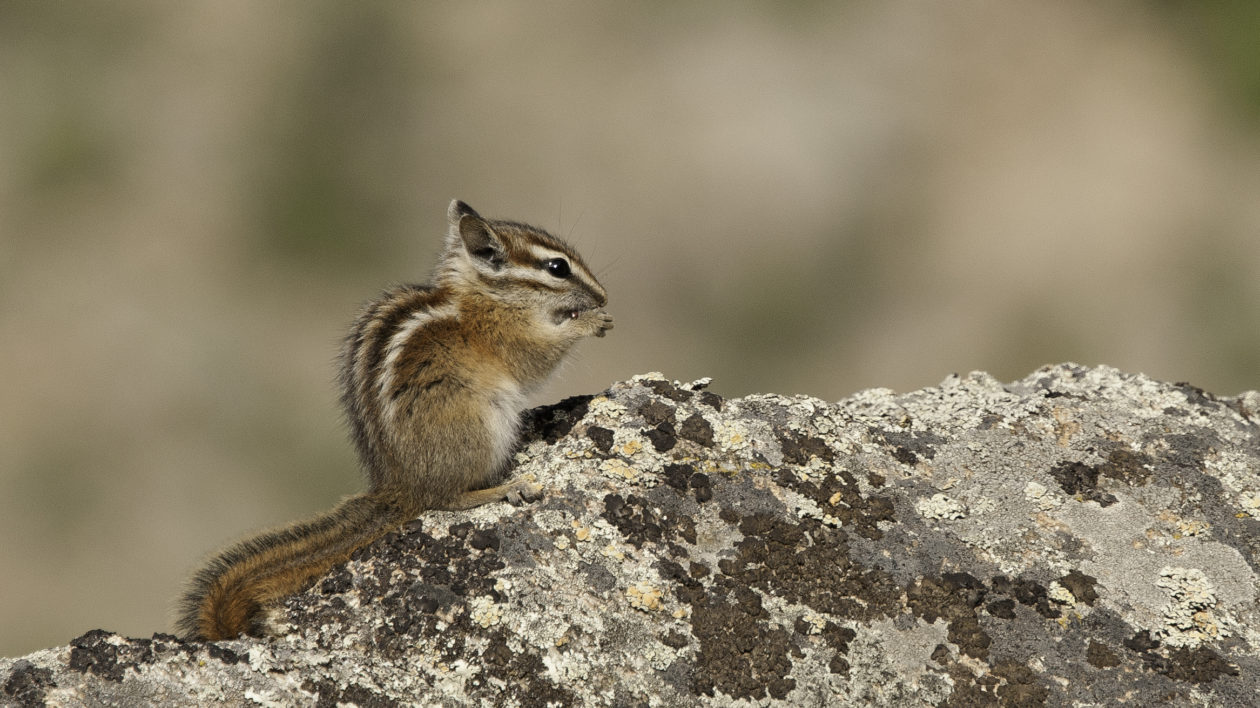
Identifying Chipmunks
If you’re in the western United States, how do you begin to identify the seemingly subtle variations of 21 different chipmunk species? Range is a significant consideration. Many species have limited ranges, and in many areas, there are only one or two possibilities.
A good field guide is essential here. Any of the mammal field guides to North America (the Kauffman and Peterson guides are both excellent) has good information on chipmunks. I also highly recommend the Lone Pine guide, Squirrels of North America by Tamara Eder. It features all the chipmunks, plus tree squirrels, marmots, ground squirrels and flying squirrels. It’s a must for any mammal-watching enthusiast.
There are a couple of other great resources. Vladimir Dinets’s Peterson Field Guide to Finding Mammals gives specific recommendations for where to see each of the chipmunk species. You could use this book alone to plan your chipmunk quest. The website Mammal Watching also is a great resource, with lots of chipmunk sightings recorded. The website’s proprietor, Jon Hall, is one of the few people to see all the U.S. species.
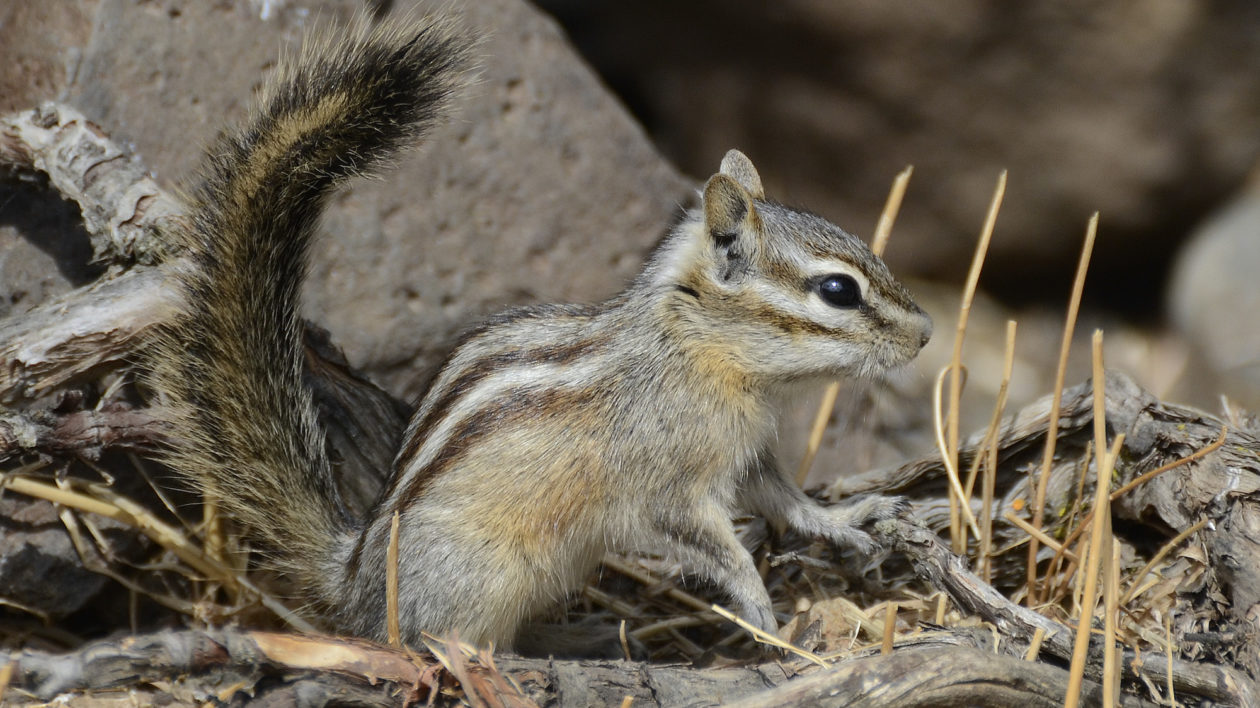
Enthusiastic naturalist Don Robertson has a great website devoted to chipmunk watching. He includes identification tips (with photos to illustrate differences) as well as good locations for chipmunk spotting. Robertson pays particular attention to the chipmunks of California, which should be considered the chipmunk capital of the world with 13 species.
Two of the species with the largest ranges of western chipmunks, the least chipmunk and yellow-pine chipmunks, often overlap with other, more range-restricted, species. Study the differences in field guides in advance so you know key identifiers when you’re in the field. (This is good practice for any wildlife watching activity).
And if you see a super-sized chipmunk, one double or even triple the size of your backyard variety? Well, that’s not a chipmunk. It’s a golden-mantled ground squirrel. These ground squirrels are striped, and quite common in many national parks and national forests of the West. The easiest way to tell them apart is by size. (See my previous blog, the Field Guide to Commonly Misidentified Mammals, for more tips).
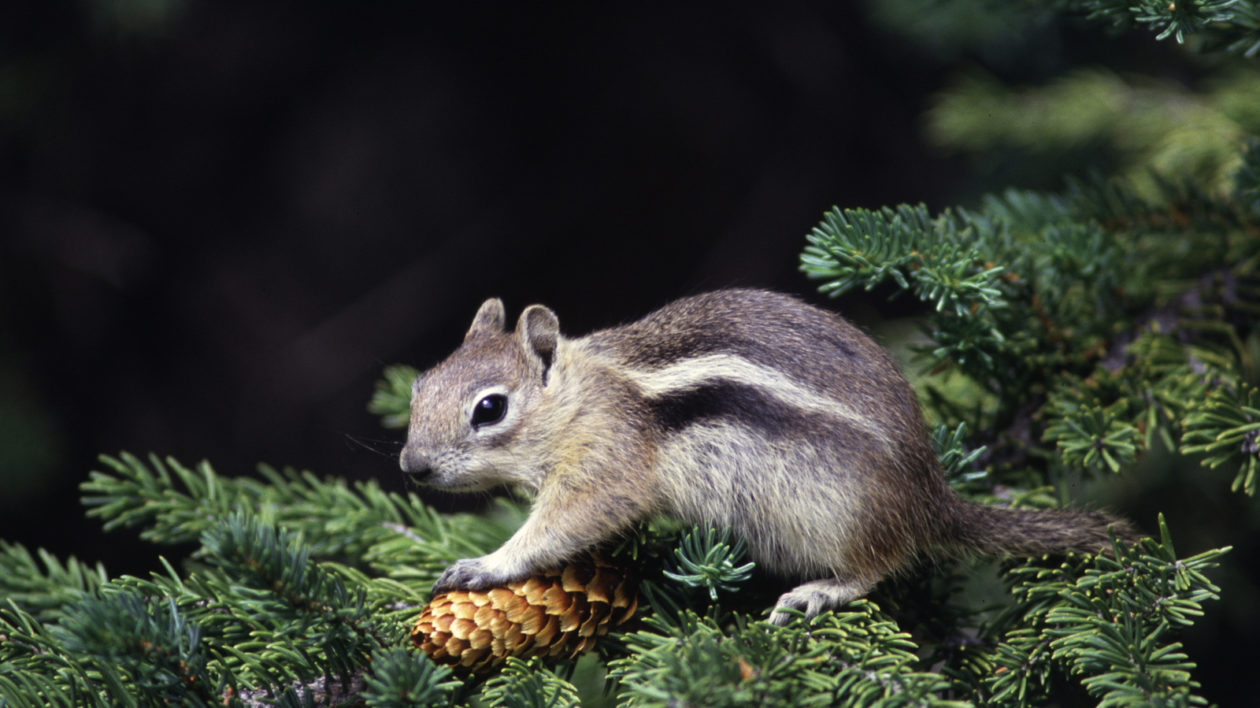
Where to Find Chipmunks
As mentioned, visiting the great national parks of the western United States will give you opportunities to see most of the chipmunk species. While chipmunks, of course, are not confined to national parks, the parks offer a plethora of hiking trails and often abundant chipmunk populations.
Check out the range maps and find the corresponding national park. I include some below that are particularly fruitful locations.
Chipmunks are opportunistic feeders. They will not pass up an easy food source. This makes campgrounds great places to see chipmunks. They will often make raids to pick up dropped crumbs or leftover cereal. You can enjoy your coffee in the morning while ticking off a new species.
Indeed, anywhere where there is human activity near good habitat, you will likely find chipmunks. This includes popular lunch stops on hiking trails, scenic overlooks, boardwalks and the woods around parking lots. Nature centers with bird feeders are also worth checking. Chipmunks are adaptable little critters. This is part of the fun of chipmunk spotting; you can easily incorporate this quest into a family vacation.
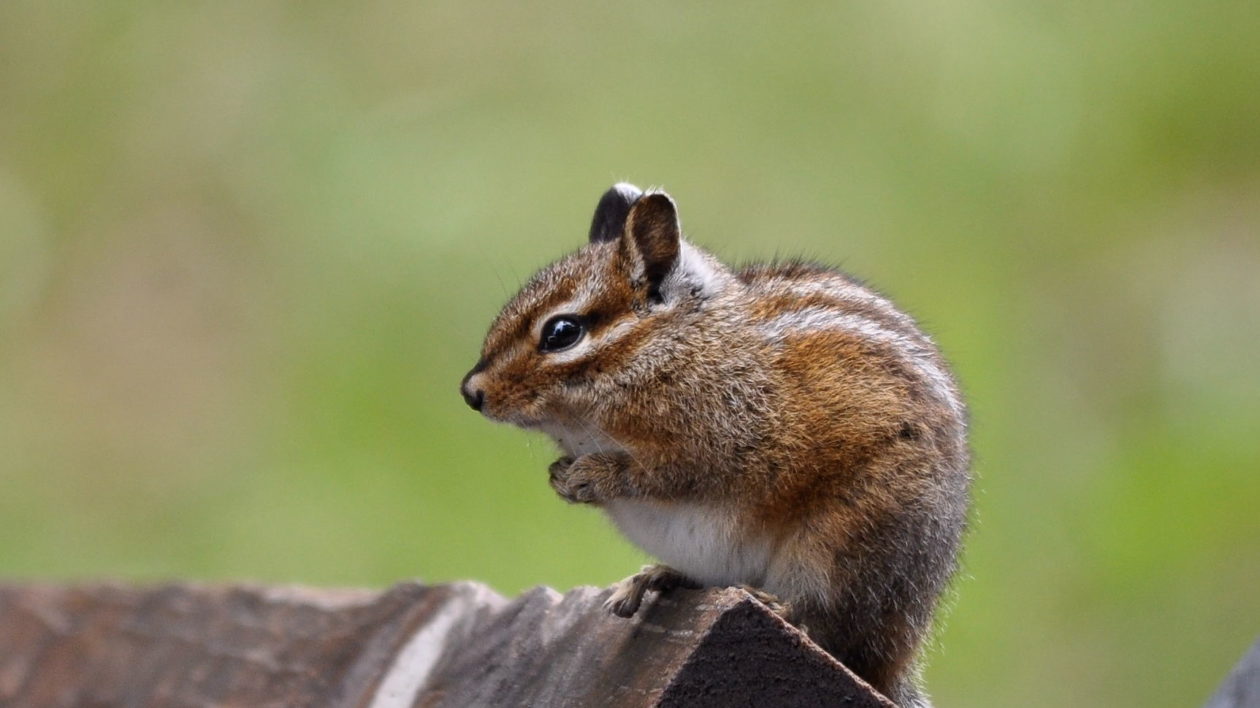
Yosemite National Park: Yosemite is best known for its stunning scenery: the granite cliffs and waterfalls and redwood groves. It’s also chipmunk central. There have been 8 species confirmed in the park. These include common ones like the yellow-pine chipmunk and least chipmunk, but also some regional specialties.
You can focus your search by habitat. The alpine chipmunk is found at the highest elevations, while the lodgepole chipmunk (as the name suggests) is found in mid-elevation conifer forests. Search the redwood groves for Allen’s and long-eared chipmunks.
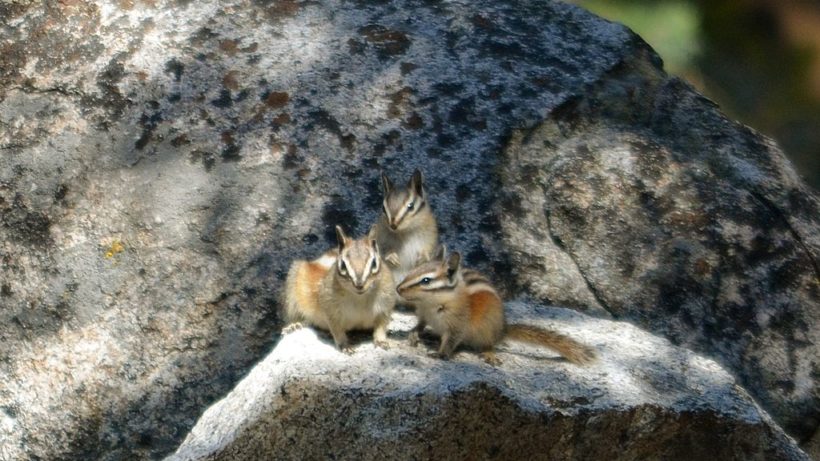
Redwoods: The Redwoods National and State Parks is a spectacular complex of parks in northern California. As you are enjoying the grandeur of the towering redwoods trees, keep an eye out for chipmunks. There are several species to be found here. You might spot an Allen’s chipmunk at Avenue of the Giants or a Siskiyou chipmunk at Jedediah Smith State Park. Undoubtedly the biggest prize would be sighting a yellow-cheeked chipmunk, a shy denizen of forests and arguably the most difficult species to see.
I consider the redwoods to be difficult for chipmunk spotting (and wildlife watching in general). In fact, I completely blanked on any chipmunk sightings during a weeklong trip there. And I was looking. Of course, if it wasn’t a challenge it wouldn’t be worth doing, and just being in the redwoods is reward enough.
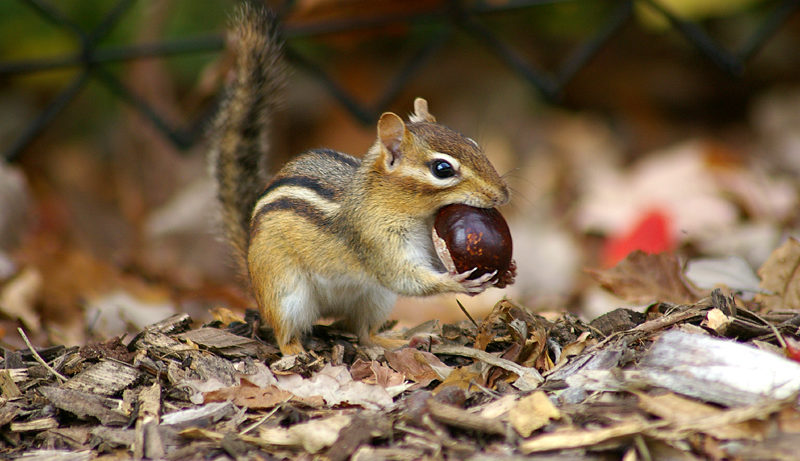
Canyon Country: The arid regions of the West have their own chipmunk diversity. You could see up to four species at the Grand Canyon: least, Uinta, Colorado and cliff chipmunks. A bit to the north, you can add the gray-collared chipmunk. The Flagstaff Arboretum is a well-known location for this species, and I saw several while fishing for Apache trout in the White Mountains.
Arches and Canyonlands national parks have the Hopi chipmunk, a dusky species that is one of my favorites. To the west, the mountains near Las Vegas offer chances for Palmer’s and panamint species. Joshua Tree National Park is a great place to spot California chipmunks. If you’re planning a Southwest road trip, you can add a lot of chipmunks to your life list.
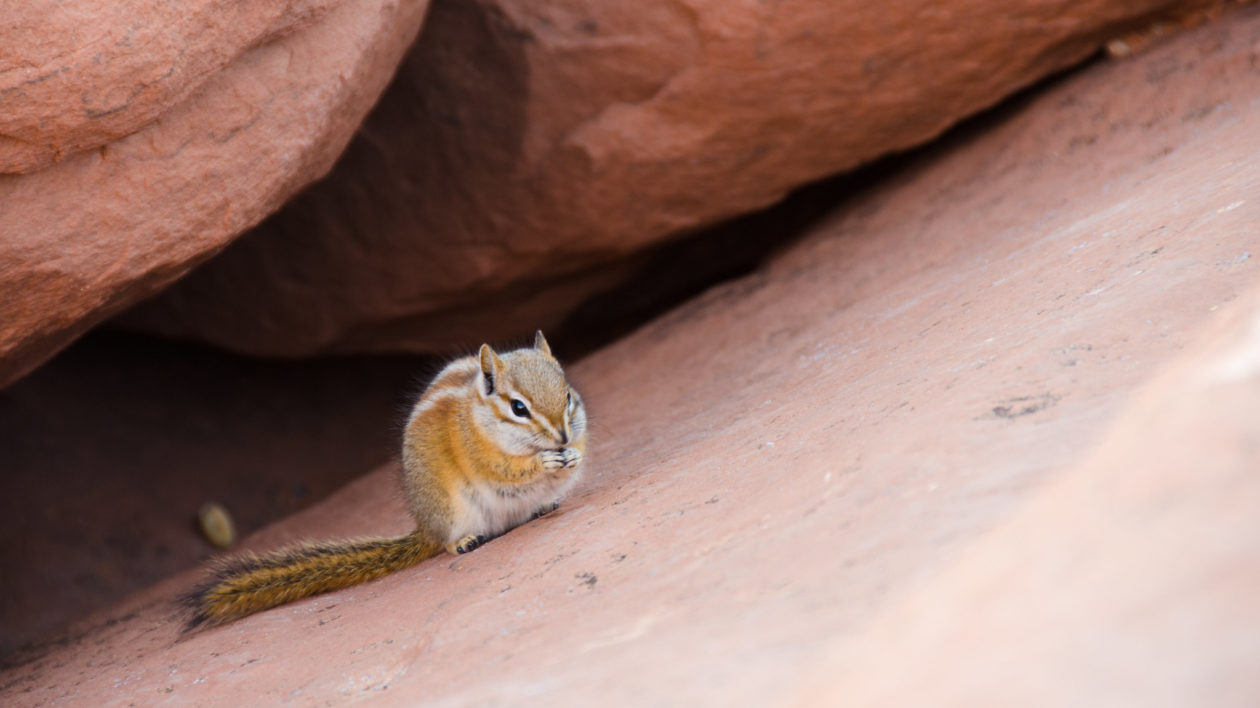
Biodiversity Rules
I will acknowledge that attempting to see every chipmunk species is pretty nerdy and perhaps even a fringe activity. But with citizen science activities and apps like iNaturalist, more nature enthusiasts are looking to record all their wildlife sightings.
What they invariably find is that the world is astonishingly diverse. Squirrels are so familiar we take them for granted. But the squirrel family includes 275 species worldwide. There are giant squirrels that live in Indian forests, tiny squirrels that roam the Amazon, marmots in alpine regions of Europe, Asia and North America. And chipmunks.
I search for new wildlife species because it is a fun challenge and takes me to really beautiful places. But this lifelong obsession has also fueled my devotion to biodiversity conservation. Each chipmunk species is an irreplaceable treasure, a product of evolution, of the variations in geology, elevation and vegetation.
The next time you’re having lunch in a national park, take a look at that chipmunk scampering under foot. Pull out your field guide and try to identify it. Record it and keep a list – and let the quest fuel your commitment to protecting the diversity of life on earth.
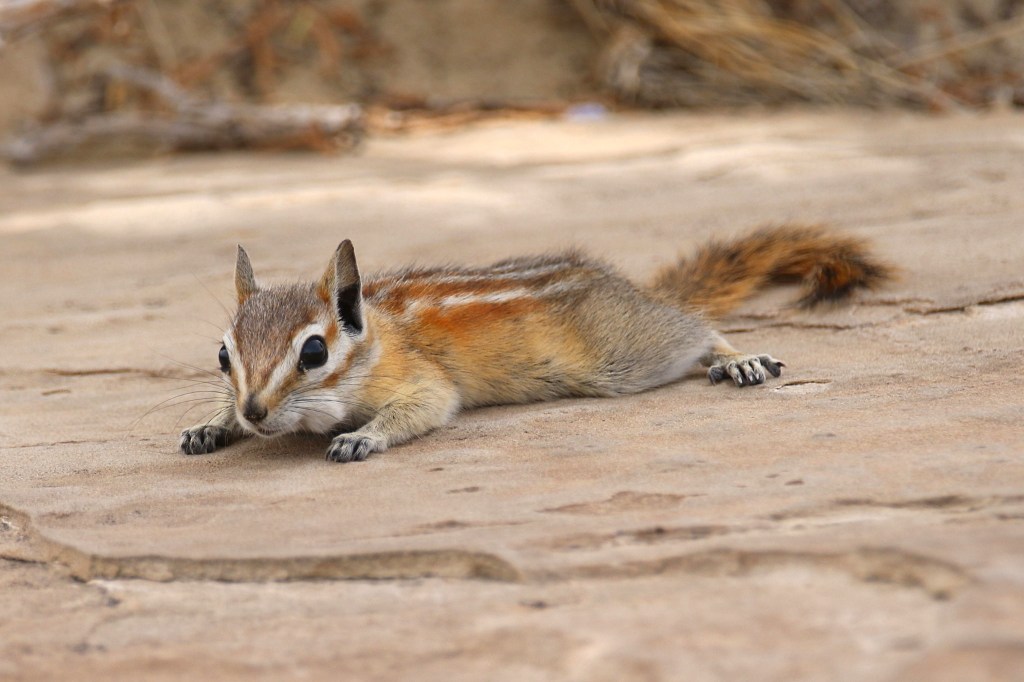



What is the population of chipmunks in North America?
I am fairly certain no one has done an estimate of this. Given there are so many different species, it is difficult to determine and they are not highly studied.
I live in Pocono Mt, Pa where we get a lot of chipmunks every year. This year I’ve seen only a few. Why
Is this happening
Matthew, we live in the suburbs of NYC and are used to seeing hundreds of Chipmunks. Here it is May 7th, ’21 and we have yet to see even 1. Our neighbors are in the same boat. Can you please explain what’s going on? As nature-lovers, it’s an environmental concern. Would love to hear that this is normal.
Hi Vivien,
Thanks for your question. It is difficult to know exactly why you would not be seeing chipmunks. They do enter periods of torpor, similar to hibernation, so they must just have not emerged yet. Sometimes wildlife populations fluctuate locally. I’d keep an eye out for them. You may seem them soon.
Best,
Matt
Great article and great topic! Another resource for finding, as well as documenting, biodiversity is iNaturalist. The details page for a species or genus has range maps and many ID’d photos to help train your eyes.
Wonderful post! Thank you!
The least chipmunk is also found in the eastern US